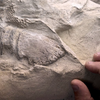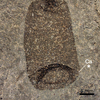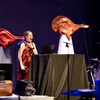Scientists at CERN Are Split-Second Alchemists

A front view of the ALICE experiment
Post Author: - Ellis Nolan
Although they won’t be turning a profit anytime soon, scientists at CERN have become split-second alchemists, briefly turning lead particles into gold.
In a recently published analysis, researchers working on ALICE (A Large Ion Collider Experiment) observed and documented unique behavior in lead isotopes during their procedures. The purpose of ALICE is to better understand the conditions of the universe directly after the Big Bang; To do so, researchers use the Large Hadron Collider (LHC) to fire two beams of lead isotopes at each other at close to the speed of light. When the nuclei of two lead ions collide, they form a material called quark-gluon plasma, which scientists believe was abundant in the universe microseconds after the Big Bang. The aftermath of these collisions is used to study this matter.
A visual depiction of one of ALICE’s collision experiments
Although the purpose of firing these lead particles is to create collisions, sometimes the particles simply skim one another. When this occurs, it can create an electromagnetic field that causes the lead particle to lose three protons, transmuting it, as scientists termed it, into gold. The researchers also realized that any time the LHC is used to fire beams of lead at one another, gold particles are created, it’s just that ALICE is the first experiment with the capability of parsing this occurrence from all other collision debris.
While creating gold from lead is an achievement of mythic proportions, it’s not about to significantly supplement CERN’s funding. Between 2015 and 2018, the researchers estimate particles from collisions inside the LHC created about 29 trillionths of a gram of gold, worth a little more than 0.03 trillionths of a cent as of May 2025. Oh well, an alchemist can always hope.
Interested in precious metals? Check out our Shiny Treasures collection here!
Featured Product
Joe Frazier Boxing Glove
Cool Things!

Is “Paul is Dead” Dead?: Unpacking One Of Pop Culture’s Most Enduring Conspiracy Theories

Scientists Discover Hooves and Skin in Preserved Dinosaur "Mummies!"
A dinosaur discovery just in time for Halloween! In a new analysis of a group of fossils from Wyoming, Scientists have determined this group of fossils are dinosaur “mummies,” with preserved skin and even hooves.

Scientists Record a Bat Catching Birds Mid-Flight!
Bats, birds, screeches, oh my! In a reverse-Hitchcock twist, a new study reveals that a species of European bat catches and eats birds mid-flight.
Specimen Deep Dives

The House that Ruth Built: The Story of the Old Yankee Stadium

The Queen of the Skies: the Story of the Boeing 747

Old Ironsides: The USS Constitution and the Start of the U.S. Navy
Long Form Articles

The Artist Behind the Macintosh: Susan Kare and Apple Computers
While the two Steves, Jobs and Wozniak, are the most well known faces behind Apple computers, equally important to the products and culture of the company were those who crafted the experience of using their computers through design. The most notable of these visual architects was Susan Kare, a designer responsible for “humanizing” Macintosh computers.

Can I Lick It? Yes You Can!
Have you ever been unable to tell if a fossil was really a fossil, but you were too embarrassed to admit it? Have you ever wanted to lick a fossil just because, but you didn’t want to risk judgment from your peers? Well, good news! You can kill two birds with one stone! Licking a fossil can actually help you determine if it’s the real deal or just another rock.

Is It Legal To Own a Meteorite: How to Start Your Outer Space Collection!
Meteorites are some of the rarest geological specimens to be found on Earth. Of course, since these stones are not of our world, purchasing them can sometimes be a confusing process. Is it legal to own a meteorite? In short, yes! Read on for help starting your cosmic collection!


















